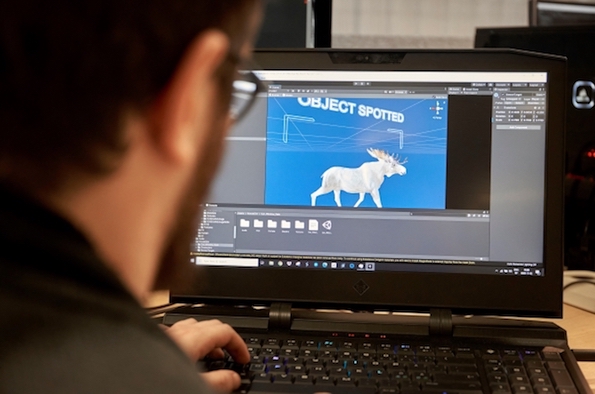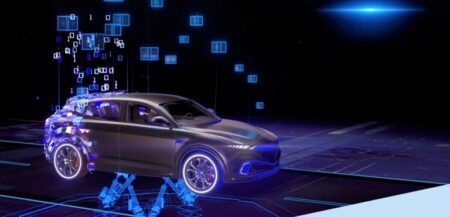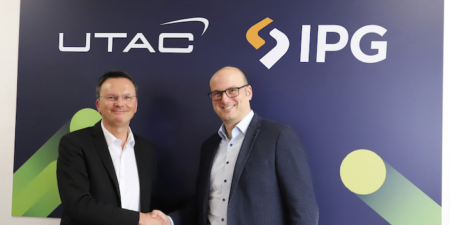Volvo Cars engineers have installed what they describe as “the ultimate driving simulator” at their R&D headquarters in Gothenburg, Sweden. This mixed-reality simulator will be used to make advances in safety and autonomous driving technology.
The hardware includes a setup with a moving driver’s seat, a steering wheel with haptic feedback, and a crystal-clear virtual-reality headset. This is paired with technology from real-time 3D development platform, Unity, and Finnish virtual and mixed-reality expert, Varjo, to simulate driving a real car on real roads. The system combines realistic high-definition 3D graphics, an augmented-reality headset and a full-body ‘Teslasuit’ that provides haptic feedback from a virtual world while also monitoring the user’s physical reactions.
This combination of software and hardware will enable Volvo Cars engineers to simulate traffic scenarios on reproductions of test track roads while ‘driving’ a car with a realistic setup, all in the safety of the lab or a stationary vehicle. Engineers can gain insights on the interaction between people and the car for development of new safety, driver-assistance and autonomous driving features. Users can be exposed to imagined active safety and driver-assistance features, upcoming autonomous drive user interfaces, future car models and many other customisable scenarios.

Casper Wickman, senior leader of user experience at Volvo’s ‘Open Innovation Arena’, explained that the system enables Volvo Cars engineers to study authentic human reactions in a safe environment and at a fraction of the cost of a real-life tests.
“Working together with great companies such as Varjo, Unity and Teslasuit has allowed us to test so many scenarios that look and feel totally real, without having to physically build anything,” said Wickman. “It lets us test drive actual cars in traffic scenarios that look and feel real but can be adjusted at the touch of a button.”





